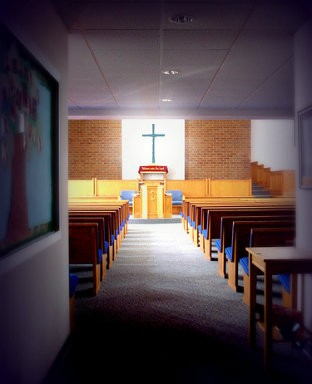Negative numbers: The decline narrative reaches evangelicals
For most of the latter half of the 20th century, religious life in the United States was marked by four consistent trends: oldline Protestant membership was declining; evangelical Protestants were growing; Roman Catholics were hovering just above the replacement level (with new immigrant growth slightly exceeding the amount of erosion in the white ethnic base); and each succeeding generation of adults was participating less in religious institutions.
A funny thing happened in the first decade of the 21st century: both Catholics and the conservative wing of evangelical Protestantism joined in the decline (see figure 1). The Pentecostal/holiness family is now the only stream of the Christian tradition that is growing. (This judgment depends on how one categorizes the Latter-day Saints, who are also increasing, and on how one assesses the fortunes of the historically black churches, for which there is not reliable data.) These findings are based on the 2010 U.S. Religious Census data compiled from denominationally provided statistics for 236 religious bodies (available online at thearda.com/RCMS2010).
 A more nuanced picture of the decade is provided by data culled from the Yearbook of American and Canadian Churches, which provides relatively consistent annual data on denominations going back to the 1950s (but based on a much smaller sampling than the 2010 U.S. Religious Census compilation). The Yearbook data show that membership growth for the Pentecostal/holiness stream has consistently outpaced that of conservative Protestants since at least 1955. Nevertheless, it peaked during the early 1980s at around 4 percent a year, has slowed ever since, and is currently on the verge of falling below 1 percent a year.
A more nuanced picture of the decade is provided by data culled from the Yearbook of American and Canadian Churches, which provides relatively consistent annual data on denominations going back to the 1950s (but based on a much smaller sampling than the 2010 U.S. Religious Census compilation). The Yearbook data show that membership growth for the Pentecostal/holiness stream has consistently outpaced that of conservative Protestants since at least 1955. Nevertheless, it peaked during the early 1980s at around 4 percent a year, has slowed ever since, and is currently on the verge of falling below 1 percent a year.






